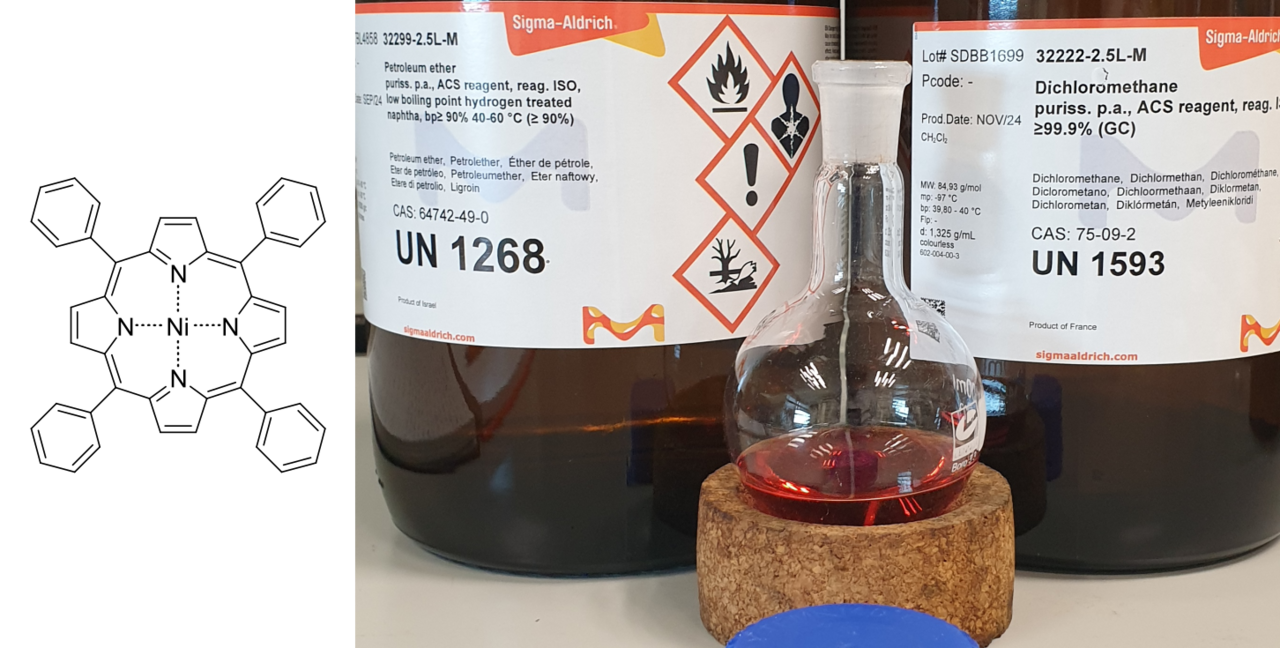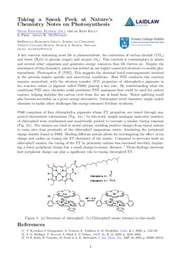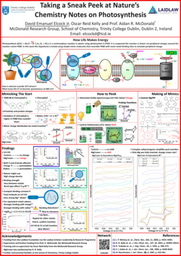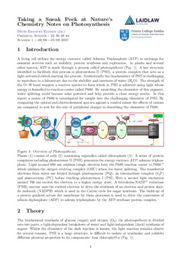What Didn't Make The Cut...

It is the end of my summer 1, I'm having to condense month's of work into a 2-3k word report, 200-300 word abstract and a poster with ideally a minimal amount words. Naturally some data or work is de-prioritised, deciding what to include and what to leave can be hard. But what if I told you that I spent weeks on trying to synthesise a compound that isn't even mentioned in any of those works? Ah, context is needed... Let me start over.
If you like breathing you should thank photosynthesis, the reaction providing you oxygen in the air. If you have a sweet tooth you can thank photosynthesis again as it literally produces sugar from carbon dioxide and water. For summer 1 I thus investigated photosystem II (PSII), a protein complex that plays a key role in photosynthesis. Truth be told I want a solar powered sugar factory in my basement but it turns out photosynthesis could also provide clean energy. When I say clean I mean clean, absolutely. How you might ask with scepticism? Well, PSII break down water into hydrogen and oxygen. You might think to yourself, 'so what? it's not rocket science'. Actually, it is... Many rockets combine hydrogen and oxygen to recreate water since the reaction release a lot of energy. So the work in summer 1 is both sweet and energetic! Great! So what went wrong you asked?
To clarify, a lot went right. We were able to confirm our hypothesis and observe the chemistry we were hoping for, unexpected chemistry appeared which is always exciting and I didn't burn my face with acid which is always a good start. But a lot also didn't go as planned: several instruments were misbehaving which makes their first time use especially challenging. There was also a steep learning curve as a lot of chemistry knowledge isn't taught until the next academic year. But none of that pales in comparison to the devil in molecular form, the tantalising porphyrin from the abyss, I'm talking about NiTPP whose ugly molecular structure you find in the banner of this article - and forms a scarlet red colour when dissolved in chloroform. Honestly, the colour should have been a warning sign...
Back to the context, in studying PSII I had to make mimic molecules of chlorophyll-a. The pigment in PSII we are investigating is made up of 4 of these molecules in a specific orientation. The mimic complexes we make contain a magnesium (Mg) metal center since chlorophyll-a does so too. But an interesting question arose in the research group, what if we change the metal to nickel (Ni)? Sounds odd at start but it helps to know that Mg engages in ionic bonding whilst Ni forms covalent bonding. If that doesn't mean anything to you, it suffices to know that Mg abandons it's outer electrons like unwanted children whilst Ni is more interested in co-parenting. You might be convinced Ni is more responsible but don't be fooled...
I've synthesised TPP, a lovely porphyrin molecule with cool chemistry. From TPP I made MgTPP, my reaction yield was comparable to the literature so my confidence grew. NiTPP is reported widely in the literature with synthesis comprising of a simple reaction of high yield, with my new confidence I thus tried it, and it worked! Using some fancy chemistry techniques I could see the product was formed! My yields were lower, but I got it! The only thing I needed was purify it, isolate it from unreacted reagents. Fair enough right? -_-
Re-crystallisation, colum chromatography, different reagents, pray, chemistry lab ritual, I tried it all. NiTPP just won't let go of unreacted TPP, I couldn't purify it. Don't think I tried it once either, for weeks this went on and on, NiTPP just laughing at my attempts and in the end it won. What NiTPP doesn't know however is that my practical lab skills improved a lot. Every time NiTPP gave me a curl ball I learned what caused the problem - I addressed it and got to be a chemist solving real problems. Perhaps thus I should laugh at NiTPP, for making my training better, giving me a story to write and most importantly: giving me a molecule to legitimately hate. Ask yourself, what molecule do you hate and why? Know you know mine and why.




Please sign in
If you are a registered user on Laidlaw Scholars Network, please sign in